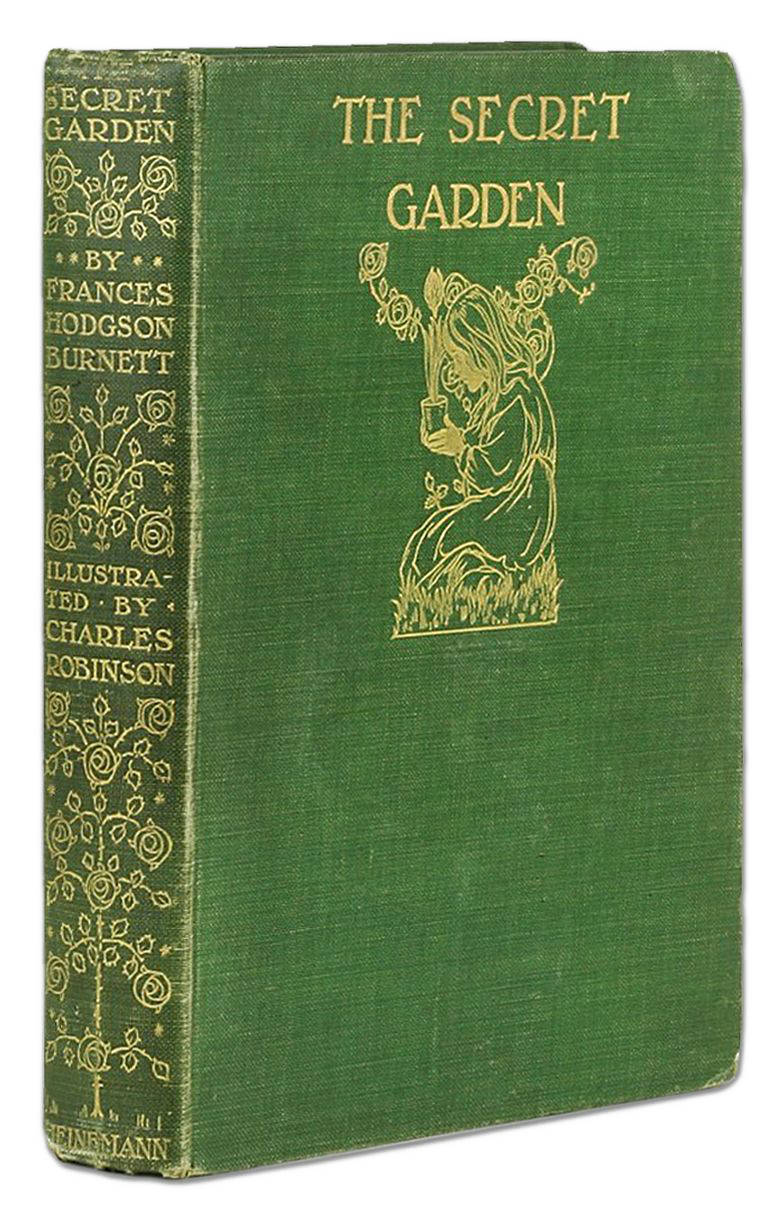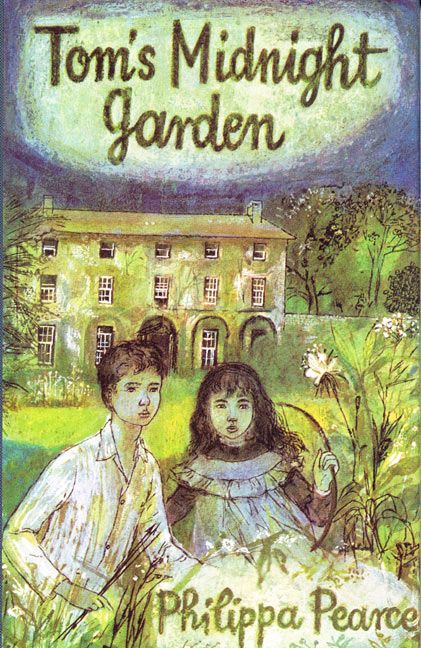From a Child’s Perspective: Magical Reality in Narratives by Virginia Woolf, Frances Hodgson Burnett and Philippa Pearce
June Hopper Swain
The very first paragraph of Modernist author Virginia Woolf’s novel To the Lighthouse (1927) describes how six-year-old James Ramsey, holidaying with his family in Skye, in the Hebrides, is engaged in cutting out pictures from an Army and Navy Stores catalogue.

Although determined to remain disagreeable, the unexpected gift of a skipping rope, plain-speaking Yorkshire folk like Martha, the servant girl, and the ‘rough fresh air’ blowing from across the moors begin to work their magic on Mary. With the help of the gardener Ben Weatherstaff’s robin, she discovers in the grounds of the manor a secret walled garden, closed and untended for many years. The idea of having a ‘secret garden’ appealed greatly to the lonely child; it was, she felt, ‘almost like being shut out of the world in some fairy place’ (1960: 78–79).
Mary befriends 12-year-old Dickon, Martha’s brother, who is the nineteenth-century’s idealised image of the Romantic child so at one is he with the natural world around him. Pan-like, and reflecting the ‘pseudo-pagan spirituality in much of the fiction of the period’ (Cogan Thacker and Webb, 2002: 79) he charms the animals when he plays on his rough wooden pipe, and it seems to the enchanted Mary that ’he might be a sort of wood fairy’ (1960: 97).
One night, Mary, to her astonishment, discovers that she has a cousin, Colin Craven, hidden away in a bedroom in a remote corner of the house. He is a sickly-looking and peevish child. Recognising something of herself as she once was, bad-tempered and sullen, she stands up to Colin’s tantrums and gradually coaxes him out of the confines of his, seemingly, permanent sick bed and eventually out into the sun and air and, of course, the secret garden. Eventually, the time comes when Colin, growing stronger every day, has to admit, rather warily at first, that ‘Even if it isn’t real Magic … we can pretend it is. Somethingis there – something!’ (1960: 200).
Colin’s mother had died when he was born, since when Archibald Craven had had little time for his son and left the care of him to others. But the Magic was beginning to work on him too, away many months in the beautiful Austrian Alps. It was here that he found an almost mystical sense of peace, and it was this, as well as a vivid dream and a letter from Dickon’s mother, the archetypal earth mother, that brings him home at last. He had expected to see a ‘sickly, weak-backed boy whose father was afraid to look at him’ (1960: 209). Instead, he finds that his son has grown strong and well, and is moved beyond words when his son tells him ‘It was the garden that did it – and Mary and Dickon and the creatures – and the Magic’ (1960: 251).

Years before writing Tom’s Midnight Garden Pearce (1920–2006) had read J.W. Dunne’s An Experiment with Time (1927), a study in precognitive dreams and a theory of time that Dunne was later to call Serialism. While his study has subsequently had its detractors, it did sow the seed in Pearce’s mind for her time shift novel.
While his brother recovers from measles, 12-year-old Tom Long is sent to stay with relatives in a stuffy flat in an old converted house. He is lonely, restless and bored, until one midnight the clock in the hall strikes thirteen. During this magical out-of-time hour Tom finds that the house becomes as it was in Victorian times with a beautiful rambling walled garden. Based on the mill house and garden where Pearce spent her childhood in Cambridgeshire, the descriptions have an actuality about them. Particularly vivid and sensual are her descriptions of the garden and one can almost feel the dew-damp, lush grass under Tom’s feet as he ventures out onto it and smell the scent of the hyacinths and wallflowers in the flower borders.
Yet throughout the narrative there is a dreamlike quality: although Tom does not notice it, we are told that, unlike the gardener’s, his own footsteps leave no trace on that dew-damp grass (2015: 42); and the times of day and the seasons in the garden seem to change on each of Tom’s visits while the seemingly long periods of time he spends in the garden appear to be contained within but a few minutes in the real world (2015: 43).
On the night before he is due to go home, Tom tries to re-enter the garden, but it is not there. In its place are the dusty yard and some dustbins. The magical out-of-time hour has ceased to be; he is firmly back in the twentieth-century and his dream of mastering Time and living in the garden with Hatty for eternity must be abandoned.
The mystery of Hatty and the garden and their links to old Mrs Bartholomew, the landlady who has a flat at the top of the house where Tom’s aunt and uncle live, are movingly revealed at the end of the novel. Tom had, magically, become caught up in Mrs Bartholomew’s dreams of long ago. ’When you’re my age, Tom, you live in the Past a great deal’ (2015: 222) she tells him, and it was through her dreams that she had connected with the young Hatty she once was. She had been ‘longing for someone to play with and for somewhere to play’ (2015: 223) just as Tom had, and so, through her dreams, their need had drawn them together.
When Tom’s parents come to take him home, and he is about to leave, he suddenly turns back and puts his arms around Mrs Bartholomew, ‘a shrunken little old woman’ (2015: 227), and hugs her as if she were a little girl. He understands, surely prompted by his own sadness at losing the young Hatty and the ‘midnight garden’, and perhaps showing a maturity beyond his years, her sense of loss and longing for what has gone forever. There is poignancy here in that the child has as strong a desire to relive what has passed as has an elderly woman for they pledge to continue to share their memories of the magical ‘midnight garden’ on Tom’s promised future visits (2015: 225).
The experience of each of the three children, six-year-old James, nine-year-old Mary and twelve-year-old Tom, is touched by a kind of magic while being grounded in reality. The older the child, the more complex the magic seems to be. For James, the magic was fleeting, there one minute and gone the next when that which he has most wanted, and his father has seemed intent on preventing, may not be possible after all; for Mary, her awakened sense of wonder at the magic inherent in nature, and her understanding of its transforming potential, will surely remain with her always as it will for Colin; for Tom, it was a tenuous magic, woven out of someone else’s dreams of events long past, but so beguiling and real seeming that he had begun to lose sight of his everyday world; yet for Tom, the ‘midnight garden’ will always be both magical and ‘real’ for as long as he and Mrs Bartholomew have their shared memories of it.
Works cited
Cogan Thacker, Deborah and Jean Webb (2002) Introducing Children’s Literature from Romanticism to Postmodernism. London: Routledge.
Dunne, J.W. (1927)An Experiment with Time. London: A & C Black.
Hodgson Burnett, Frances (illus. Charles Robinson) (1960) The Secret Garden.
Harmondsworth: Penguin. Heinemann. First published in the UK 1911, London: Heinemann.
Pearce, Philippa (illus. Susan Einzig) ([1958] 2015) Tom’s Midnight Garden. London: Oxford University Press.
Woolf, Virginia (2016) To the Lighthouse. London: Vintage Classics. First published 1927, London: Hogarth Press.
